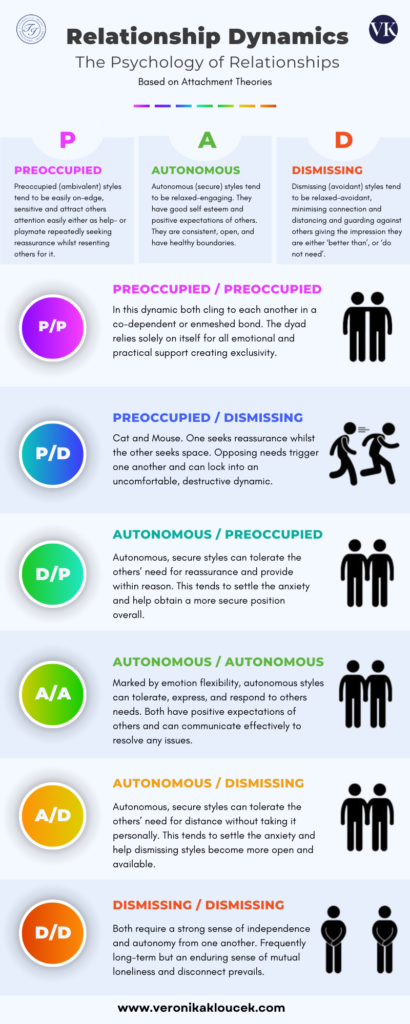
Interpersonal Dynamics in Corporate Teams and Personal Relationships
by Veronika | Sep 13, 2023
Navigating interpersonal dynamics is an integral part of our daily existence, impacting us both in professional settings and within our personal lives. These dynamics are omnipresent, and while some individuals flourish in their relationships, others view interactions with people as a precarious endeavour.
What factors contribute to healthy relationship dynamics, enabling some individuals to thrive, while leaving others feeling they merely endure interpersonal connections?
Attachment Theory

Attachment theory has been instrumental in understanding the dynamics of human relationships and how early experiences shape our personality. Its principles are equally relevant and illuminating when it comes to understanding interpersonal dynamics in corporate teams and personal relationships.
How can the essential concepts of attachment theory be applied to improve teamwork, communication, and overall harmony in both professional and personal contexts?
To learn more about the attachments styles matrix and the four primary styles read this article.
Impact on Team Dynamics
1. Recognising Attachment Styles:
In a corporate setting, understanding the default attachment styles of team members, which tend to effect them most when stressed under pressure, can help leaders and colleagues work more effectively together. Identifying each team member’s attachment style can guide more effective communication and conflict resolution strategies.
2. Creating a Secure Work Environment:
Leaders can foster a secure work environment by providing consistent support, encouragement, and clear expectations. This can help employees with anxious or avoidant attachment styles feel more comfortable and engaged.
3. Encouraging Collaboration:
Autonomous (secure) team members tend to be emotionally flexible, thus more open to collaboration and constructive feedback. Encouraging collaboration can help create a more cohesive and productive team.
4. Addressing Conflict:
Conflict resolution strategies can be tailored to individuals’ attachment styles. For example, team members with a preoccupied (anxious) style may benefit from reassurance and validation, while those with a dismissing style may need space and independence to solve issues on their own and return with solutions.
Impact on Personal Relationships
1. Self-Awareness:
Understanding your attachment style and that of your partner is essential for building a healthy personal relationship. It can help you recognise your own needs and those of your partner, fostering empathy and communication.
2. Communication:
Open and honest communication is key to any successful relationship. Knowing your attachment style can help you in finding words and ways to express your needs and fears more effectively and understand your partner’s perspective, how they reach out, and what they try to communicate to you.
3. Embracing Vulnerability:
Creating a safe space where both partners can share their feelings and concerns without fear of judgment is essential for a happy and healthy relationship. Emotional vulnerability means to share the bare pain, what really hurts. Vulnerability is not an explanation or justification.
An autonomous (secure) partner’s emotional flexibility encourages trust and emotional vulnerability. Partners with a preoccupied tendency can mistake vulnerability for letting their partner know all their feelings and be upset by their partner’s boundaries. Dismissing partners tend not keep their innermost feelings to themselves and be upset by their partner’s curiosity which they can experience as intrusive.
4. Seeking Professional Help:
If attachment-related issues persist or lead to conflicts in personal relationships, seeking couples counselling can be highly beneficial. A trained therapist can offer a third perspective helping each partner where they miss the other and discover what they might be needing to work on themselves and together to develop healthier relationship dynamics.
By taking action, you create a workplace culture and personal relationships that value and prioritise the mental and physical health of individuals leading to improved communication, enhanced collaboration, and greater overall well-being for everyone involved.
If this article resonates with you and you would like to find out more for yourself or your organisation about how we can help you increase your stress resilience and help prevent burnout, schedule a confidential enquiry call today!
Veronika Kloucek, Senior Psychotherapist, Trainer, Coach

